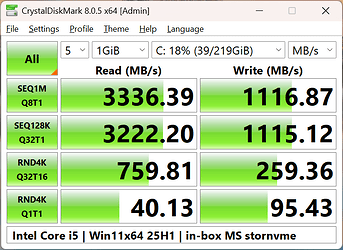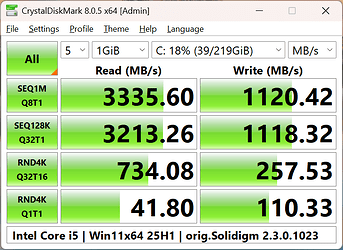Hi Everyone,
First off, greetings. This is my first post. I’m a long term storage enthusiast, but somehow I have missed Win-Raid in all its glory in the past.
I am a huge fan of Intel’s Optane drives. I have an 800GB Optane DC p5800x as the boot drive in my main workstation (AMD Threadripper 3960x), an older 960GB Optane 905p as the boot drive in my backup workstation/testbench/storage backup machine (Dual Xeon E5-2697 V2)
The backup workstation also has two 280GB Optane 900p’s as mirrored ZFS SLOG devices and my main server uses mirrored dual 375GB Optane DC P4800x as ZFS SLOG devices.
I also have a 118GB Optane 800p in a casual browsing machine I built into an x860 SBC (Hardkernel Odroid H4) and countless cheap 16GB Optane M10 drives booting various appliance devices (routers/firewalls/SBC’s etc.) where I don’t need a lot of storage.
Anyway, so yeah. My perspective is the more Optane the better. Very sad that both Intel and Micron decided to kill their 3D Xpoint products. But, at the same time, when they were new, I could never afford them, so the only reason I have them is because they were discontinued.
Anyway.
While my Optane drives still kick every other NVMe drive in the nuts (even the mighty Corsair T705) I have noticed that they perform less well on AMD systems than on intel systems.
Sequential performance is the same, but you don’t buy Optanes for sequential performance. The low queue depth 4k random reads are typically significantly slower on AMD systems than on Intel systems, which is a bummer. My main workstation is a Threadripper 3960x, so I’d obviously like to do something about this.
I found a post from 4 years ago on facebook that talked about how you can bring Optane low queue depth random performance up to Intel levels by tweaking and signing Nvme drivers or something like that.
That post then proceeded to link to this (now defunct) win-raid.com post for more information:
https://www.win-raid.com/t2852f25-Hardware-IDs-for-Intel-Optane-drives-request-for-an-update.html
I did some more reading on the archived forum thread , but this forum won’t let me post the link as a new user.
Is anyone knowledgeable about this process here? I’d appreciate nay information anyone can share on how I might bring my 800Gb Optane DC p5800x up to speed.
Reviews I have read see over 400MB/s in RND4k Q1T1, but on my Threadripper I am only seeing about 280MB/s.
Appreciate any information or suggestions!
–Matt

